BKM Marketing is a small business. And like everyone else, we’re part of the climate change problem. We have a responsibility to ourselves and future generations to offset the negative environmental impact we’re causing. In 2021, we took action and were determined to understand how our small business contributes to climate change and what we can do about it.
In honor of Earth Day, in response to the latest UN Climate Report, and true to our original goal of impacting the advertising industry by sharing our learnings, we felt it necessary summarize the current state of affairs globally, recap our 2021 Net Zero Now initiative + how we became carbon neutral, assist the 84% who want to understand their carbon footprint better, and most importantly, aid the 65% who are unsure of what actions they can take to reduce emissions and their carbon footprint.
Before we delve into the harsh reality of the current global climate crisis, let’s kick off with a dose of positivity.
The good part of the story is that we can do this.
We know what to do – we just have to decide to do it.
Andrea Dutton, Paleoclimatologist, University of Wisconsin-Madison
And now the climate change stark reality.
According to the IPCC Sixth Assessment Report released on April 4, 2022, if we don’t act to stop greenhouse gas emissions now, the Earth could warm as much as 3 degrees Celsius - major cities will be underwater, millions of plant and animal species will become extinct and unprecedented heat waves, and terrifying storms will become the norm.
The IPCC (Intergovernmental Panel on Climate Change) is the United Nations body for assessing the science related to climate change. They prepare comprehensive Assessment Reports about the state of scientific, technical, and socio-economic knowledge on climate change, its impacts and future risks, and options for reducing the rate at which climate change is taking place.
Their most recent Working Group III report provides an updated global assessment of climate change mitigation progress and pledges and examines the sources of global emissions. It explains developments in emission reduction and mitigation efforts, assessing the impact of national climate pledges concerning long-term emissions goals.
According to UN Under-Secretary-General and Executive Director of the UN Environment Program, Inger Andersen, the report “tells us that we have the knowledge and the technology to get this done through a rapid shift from fossil fuels to renewable and alternative fuels” and that these changes must be accomplished, “through moving from deforestation to restoration, through backing nature in our landscapes, oceans, and cities; through transforming our cities into green and clean spaces; and through behavior changes to address the demand side of the equation.”
We are at a crossroads. The decisions we make now can secure a liveable future.
We have the tools and know-how required to limit warming.
Hoesung Lee, IPCC Chair
In the US, natural gas remains the largest single source of electricity generation, accounting for 38%. While coal’s market share has been down 40% since 2011 – due to weakened demand and aging coal plants being retired – the volume of power generated from coal-fired power plants rose slightly in 2021 to 22%.
According to UN Secretary-General António Guterres, "[s]ome Government and business leaders are saying one thing, but doing another. Simply put, they are lying. And the results will be catastrophic. This is a climate emergency. Climate scientists warn that we are already perilously close to tipping points that could lead to cascading and irreversible climate impacts. But, high‑emitting Governments and corporations are not just turning a blind eye, they are adding fuel to the flames. They are choking our planet, based on their vested interests and historic investments in fossil fuels, when cheaper, renewable solutions provide green jobs, energy security and greater price stability."
So, what in the world are we doing about it?
According to the IPCC Report, innovation policy packages have enabled these cost reductions and supported global adoption. Both tailored policies and comprehensive policies addressing innovation systems have helped overcome the distributional, environmental, and social impacts of low-emission technologies that are potentially associated with global diffusion. Innovation has lagged in developing countries due to weaker enabling conditions.
The Biden administration has adopted a goal of net-zero carbon emissions for the US economy by 2050. Congress has approved $80 billion for investment in the transition to carbon-neutral energy.
I am encouraged by climate action being taken in many countries. There are policies, regulations
and market instruments that are proving effective. If these are scaled up and applied more widely
and equitably, they can support deep emissions reductions and stimulate innovation.
Hoesung Lee, IPCC Chair
In late March 2022, the SEC released proposed rules to enhance and standardize climate-related disclosures. This may include everything from reporting on emissions, climate-related risks, and opportunities to overall generalized demand for a commitment to decarbonization and greater transparency.
And, fortunately, we are not in the same environmental position as we were a decade or so ago.
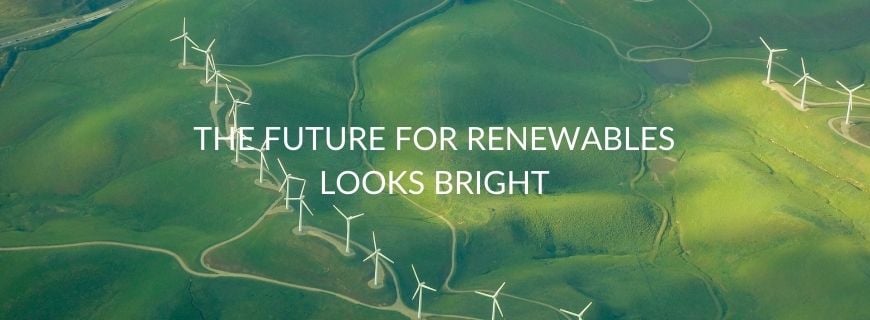
Options for reducing fossil fuel use with renewable alternatives have proven effective in slowing the annual global greenhouse gas emissions growth. Carbon-neutral energy is no longer crushingly expensive.
The unit costs of several low-emission technologies have fallen continuously since 2010. The cost of wind power is 72% cheaper, and solar is 90% cheaper than they were in 2009.
Also, as the use of these renewable energy alternatives as increased throughout the past decade, the unit cost of solar energy, wind energy, and lithium-ion batteries has all fallen. The increasingly competitive cost of producing wind and solar power is helping drive the increased investment.
The price of solar has crashed 99% in the past few decades. According to the intergovernmental International Renewable Energy Agency, utility-scale solar arrays are cheaper than the most competitive fossil fuel options. They are on their way to significantly undercutting them.
Economic viability of renewable energy alternatives has become clear
According to Jake Schmidt, Senior Strategic Director for International Climate in the International Program at the Natural Resources Defense Council, we have all the solutions we need - it's not solutions that we've never heard of. The tools we need already exist, but we have to expand their use onto a larger scale to meet the urgency of the climate disaster.
They're known commodities from the outset… solar, wind, smart buildings, electric vehicles,
walkable cities. These are all things that we've been deploying at scale over the last couple of
decades, and they got cheaper and easier to do. Energy efficiency improvements, such as
retrofitting residential and commercial buildings with better insulation and prioritizing energy
efficiency in new construction, can take a "huge chunk" out of domestic growth in energy use.
Jake Schmidt, Natural Resources Defense Council
Sustainable energy progress is being made
According to Business Council for Sustainable Energy, a record 37.3 gigawatts of wind and solar power were installed this past year, with solar energy having its best year ever at 24.2 gigawatts.
1 Gigawatt = 750,000 Homes
2021 Homes Powered by Renewable Energy
|
Solar18,150,000 |
Wind9,750,000 |
Solar and wind energy now account for a record 14% of the United States’ power generation, and leading sources of renewable energy (hydroelectric dams, solar, and wind) accounted for just over 20% of the power generated in the US in 2021 – growing 4.1% in 2021.
When combining that with nuclear energy, over 40% of energy demand in the US was met with carbon-neutral energy sources.
Ten years ago that would have been unfathomable.
Six years ago, people would have been incredulous.
Dan Whitten, Vice President for Public Affairs, Solar Energy Industries Association
But with the inevitable on the horizon, business owners and leaders must understand their carbon footprint and sharpen their net-zero strategies. Soon enough, it may no longer be a choice.
WHAT IS YOUR CARBON FOOTPRINT?
There is no way to operate without emitting greenhouse gases in today's reality. BKM Marketing generates millions of direct mail pieces and digital advertising executions for our clients every year, and direct mail is a staple communications tool for businesses of all sizes, all of which result in carbon emissions. The medium will not disappear so long as it remains cost-effective for acquiring and retaining customers, and banks and credit unions are required to mail certain compliance disclosures.
Digital marketing is a mainstay of commerce and will not disappear. At a per impression level, it has a lower carbon impact, but it’s used much more in the aggregate and contributes at least 10x more CO2 to the environment than direct mail.
(1) EMAIL WITH A PHOTO
has a larger carbon footprint than a
(4) PAGES OF DIRECT MAIL
Yes, you read that right. One email with a photo has a larger carbon footprint than four pages of direct mail.
Understanding carbon impact
The average person’s carbon footprint amounts to about 5.7 tonnes of carbon per year.
While many assume the quickest, most efficient way to go carbon-neutral is to go all-digital, this is not the reality. Digitalization can enable emission reduction, but it comes with adverse side effects.
Our internet habits contribute more to greenhouse emissions than we think
The internet accounts for 10% of the global electricity demand and about 3.7% of the global greenhouse emissions, equal to the airline industry! – and online video accounts for 60% of the total online emissions.
How is it possible that the internet produces 3.7% of global greenhouse emissions?
- Internet relies on physical servers in data centers around the world.
- Miles of undersea cables, switches, and routers that connect the data centers around the globe that need the energy to run.
- Effort to shift energy creation to renewable sources will take decades.
- Hardware companies emit CO2 by manufacturing and shipping through tools such as servers, computers and smartphones.
HOW DID BKM MARKETING APPROACH CARBON NEUTRALITY?
BKM’S NET ZERO NOW
Through our partnership with Suffolk University’s Sawyer School of Business’ Building a Greener & More Innovative Business MBA class, we addressed three critical sustainability questions:
- How can we calculate the carbon impact BKM Marketing creates to serve our clients?
- What steps can we take regarding direct mail specifically to mitigate the environmental impact?
- How can BKM Marketing impact the advertising industry by sharing the results of this work?
With the help of Professor Bari Bendell and her nine teams of MBA students, we learned that BKM Marketing and our client programs add at least 2,000 metric tons of carbon to the atmosphere every year.
That is equivalent to annual carbon emissions of:

400Car Annual Emissions |
Trees in a Forest |
|
243,000,000Cell Phones Charged |

How does this fit into my business model and priorities?
Alison Pepper, 4A’s EVP of government relations, sees a common thread between sustainable business in 2022 and the data privacy conversation, which began creeping up in the early 2000s. Just as it is now an expectation for large companies to have a chief privacy officer and a privacy compliance council, agencies need to consider the sustainability expertise that would benefit their team.
What do my customers think about sustainable business models?
|
76% feel a greater urgency to address climate change than one year ago |
79% are more loyal to companies that works to address environmental issues |
76% are more interested in shopping at Certified B Corporations |
But they need help.
|
84% want to better understand their carbon footprint better |
65% feel unsure of what actions they can take to reduce it |
*American Express’ 2021 Amex Trendex Consumer survey
Need more specific eco-friendly suggestions?
The third installment of the UN's Intergovernmental Panel on Climate Change report emphasizes the solutions already being taken for climate action and the need to speed up their implementation to meet goals. They specifically address what every person can do. Click here to jump to see FAQ 5.1.
THINK BASICS. Baby steps in sustainability count.
The carbon-neutral change will not be an overnight experience. It will be a step-by-step process with real tangible and attainable goals. Looking at the big picture can be overwhelming, but there are small steps we can take each day to integrate sustainable business practices into our everyday habits at work and reduce carbon emissions.
Click for "Small Steps to Reduce Your Carbon Footprint"
YOU ARE NOT ALONE. Everyone is going sustainable
According to McCann Worldgroup, 90% of the world’s largest 100 companies have made some sort of sustainability or climate commitment in the past two years. 4A’s report that every major agency holding company has made some sort of carbon neutrality pledge.
But beware. Do not be a greenwasher.
What is a greenwasher? Greenwashing is a form of marketing that spins a company's green PR and marketing initiatives in a deceptive manner, often to persuade people into believing the organization is environmentally friendly.
According to Earth.org, it can be as subtle as a misleading packaging choice all the way to fossil fuel companies touting themselves as being eco-champions. But either way, it is a harmful and deceitful way of advertising that a company is greener than it is.
Those who don’t stand by their word will be quickly added to the growing list of industry greenwashers.
START SIMPLE. A pledge and climate conscious plan.
Businesses as large as American Express or as boutique as BKM Marketing can pledge to becoming carbon neutral in three simple steps.
BKM MARKETING'S NET ZERO NOW PROGRAM.
-
We help clients develop effective marketing programs with lower climate impact.
-
We operate our firm at or below net-zero CO2 emissions via climate-friendly behavior and carbon offsets.
-
We neutralize the carbon impact of client digital and print marketing programs we manage through forest replenishment and other offsets - at our own expense.
AMERICAN EXPRESS' ADVANCING CLIMATE SOLUTIONS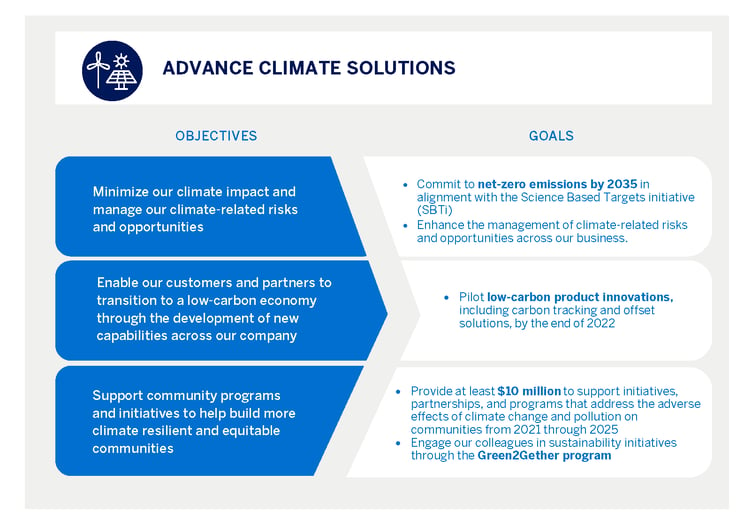
Need more inspiration from a financial industry leader?
Download AmEx's 2021 Climate Solutions Report | Read AmEx's Advance Climate Solutions Initiative Plan
CREATE YOUR OWN. Simple climate conscious steps for today through forever.
TODAYReduce negative impact Turn off power Lower monitor brightness Adjust power settings Download instead of stream Use energy-friendly lighting Recycle + compost |
TOMORROWDevelop net zero pledge Enhance remote-work policy Reduce travel + commuting Switch to cloud computing Cut emissions by 50% Partner with specialists |
FOREVERSet annual goals + targets Partner with carbon neutral suppliers Promote sustainable vendors Utilize eco-friendly products Educate + volunteer Develop emissions fee programs Purchase carbon offsets |

1.CALCULATE YOUR DIRECT CARBON FOOTPRINT“Direct carbon” footprint is the CO2 emitted by your company. Select a business carbon footprint calculatorFor example, we chose Terrapass Gather dataUtility Bills (I.e. gas, electric) Input data into your calculator. |
2.CALCULATE YOUR INDIRECT CARBON FOOTPRINT“Work Product” impact assesses CO2 created by others to create + deliver products or services. Research your work product's impact + document your supply chainYou’ll need to make informed assumptions Keep askingWhere does “that” come from? Select calculator(s)For PRINT, we used The Paper CalculatorFor DIGITAL, we constructed our own |
3.PUT THEM
|
SAMPLE | BKM MARKETING 2021
CARBON NEUTRALITY CALCULATIONS
|
CO2 Impact (Metric Tons)
|
|||||
|
2021 - 1Q
|
2021 - 2Q
|
2021 - 3Q
|
2021 - 4Q
|
YTD 2021
|
|
|
BKM Marketing Direct Impact
|
|||||
|
Office Utilities
|
4.5
|
5.0
|
5.0
|
5.0
|
19.5
|
|
Fleet
|
0.8
|
1.0
|
1.0
|
1.0
|
3.8
|
|
Air Travel
|
2.0
|
-
|
2.0
|
|
4.0
|
|
Employee Commutes
|
1.8
|
2.0
|
2.0
|
1.8
|
6.8
|
|
Servers
|
2.0
|
2.0
|
2.0
|
2.0
|
8.0
|
|
Total
|
11.0
|
10.0
|
12.0
|
9.8
|
42.9
|
|
|
|
|
|
|
|
|
BKM Client Program Impact
|
|||||
|
Direct Marketing (2)
|
2,114
|
320
|
182
|
322
|
2,937.5
|
|
Digital Marketing (3)
|
47
|
47
|
-
|
2
|
96.2
|
|
Total
|
2,161
|
367
|
182
|
324
|
3,033.8
|
|
|
|
|
|
|
|
|
Total Metric Tons of CO2 Impact
|
2,172
|
377
|
194
|
334
|
3,077
|
|
|
|
|
|
||
|
Total Offsets Purchased
|
|
|
|
|
|
|
Office via Terrapass (1)
|
12 mT
|
12 mT
|
12 mT
|
12 mT
|
48 mT
|
|
Trees planted to offset client programs (4)
|
12,966
|
2,201
|
1,097
|
1,407
|
17,671
|
|
Flight offsets via Terrapass (1)
|
2 mT
|
0 mT
|
2 mT
|
0 mT
|
4 mT
|
|
BKM Net Carbon Impact*
|
Zero
|
Zero
|
Zero
|
Zero
|
Zero
|
WE’RE HERE TO HELP.
For over two decades BKM Marketing has delivered integrated marketing, strategic solutions, and analytics, driven by pragmatic strategic insights from industry veterans. We help businesses achieve their goals with solutions that drive action. Let us help you reach your sustainable business practice goals.
Contact BKM Marketing
FAQ 5.1 What can every person do to limit warming to 1.5°C?
People can be educated through knowledge transfer so they can act in different roles, and in each role everyone can contribute to limit global warming to 1.5°C. As citizens, with enough knowledge can organise and put political pressure on the system. Role models can set examples to others. Professionals (e.g., engineers, urban planners, teachers, researchers) can change professional standards in consistency with decarbonisation; e.g., urban planners and architects can design physical infrastructures to facilitate low-carbon mobility and energy use by making walking and cycling safe for children. Rich investors can make strategic plan to divest from fossils and invest in carbon-neutral technologies. As consumers, especially if one belongs to the top 10% of the world population in terms of income, can limit consumption, especially in mobility, and explore the good life consistent with sustainable consumption.
Policy makers support individual actions in certain contexts not only by economic incentives, such as 14 carbon pricing, but also by interventions that understand complex decision making processes, habits, and routines. Examples of such interventions include but are not limited to choice architectures and nudges that set green options as default, shift away from cheap petrol or gasoline, increasing taxes on carbon-intensive products, or substantially tightening regulations and standards support shifts in social norms, and thus can be effective beyond the direct economic incentive.



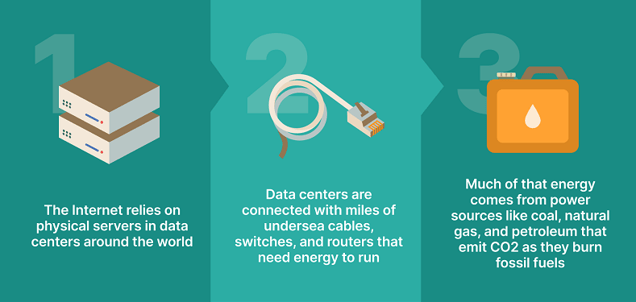




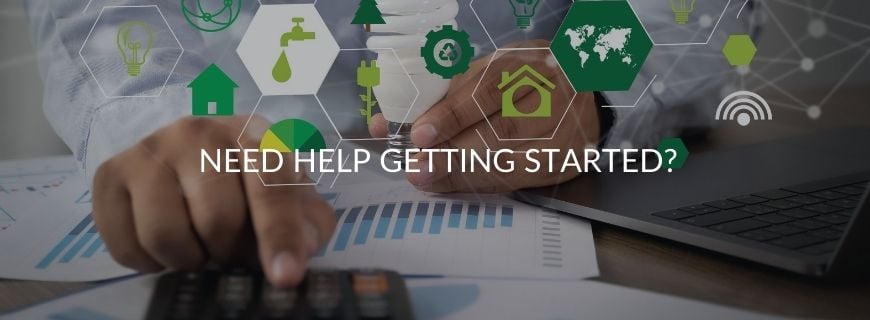
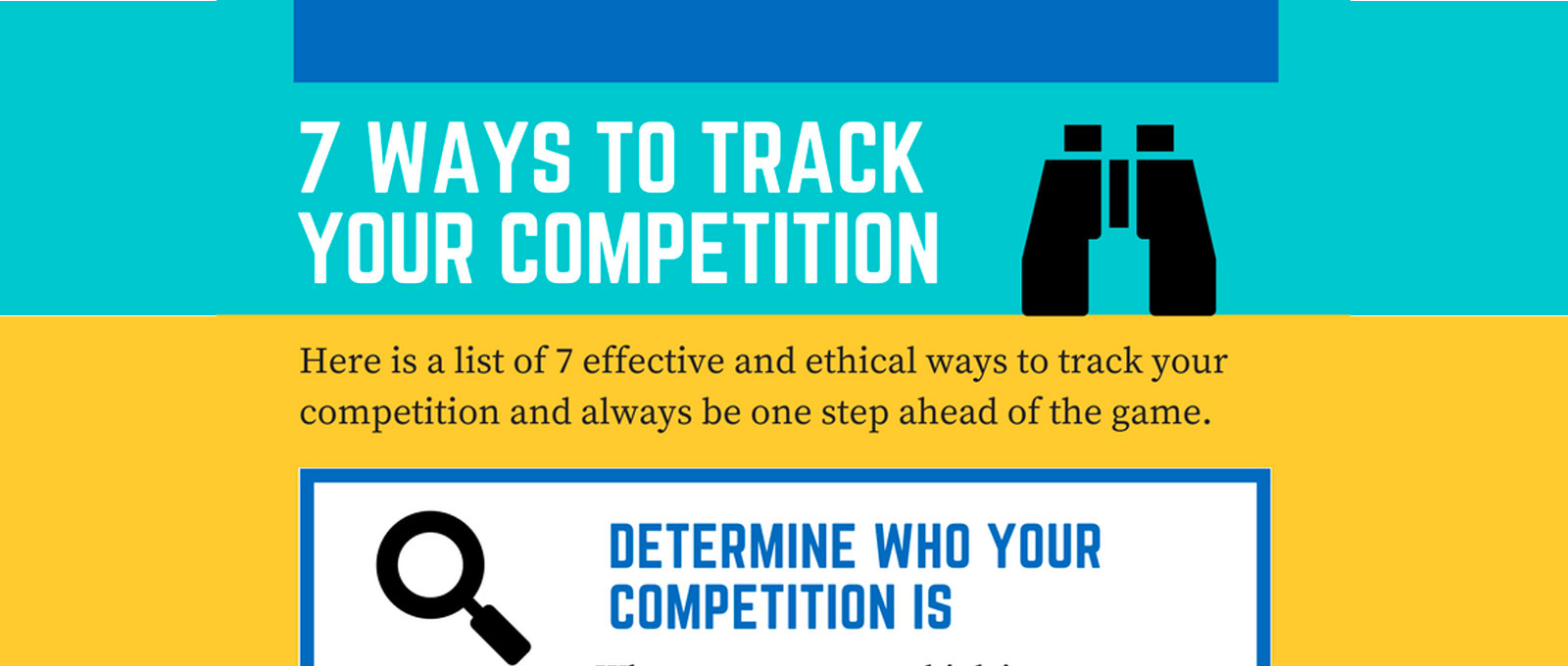

![[6] Steps to Understand + Connect with Your Audience](https://www.bkmmarketing.com/hubfs/Mail%20symbols%20with%20woman%20using%20device%20in%20a%20beige%20chair.jpeg)


SUBMIT YOUR COMMENT